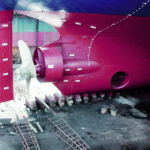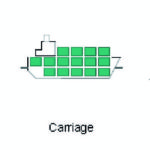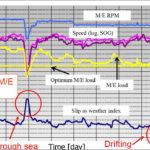The third international STG-Conference »Ship Efficiency« in Hamburg featured topics like efficient ship operation and ship design as well as trends on future fuels and power generation.
The German Naval Architects Society Schiffbautechnische Gesellschaft (STG) had created a successful bi-annual conference on ship efficiency in 2007[ds_preview]. The third edition in Hamburg (26/27 September 2011) was attracting nearly 200 participants from 20 countries. Among the speakers were representatives of top market players as Ahrenkiel, Grieg Shipping, STX, Daewoo, NYK, Carl Bro, TGE Marine Gas, Wärtsilä, Rolls Royce Marine, MAN, Kongsberg, ABB, Becker Marine Systems and others, who continued the discussions with the participants also during the conference dinner, following a speech of Hamburg’s Senator for Economic Affairs Frank Horch.
Shipping at the dawn of a new fuel efficiency era
On Januray 2013 the Energy Efficiency Design Index (EEDI) and the Ship Energy Efficiency Management Plan (SEEMP) will become mandatory in the framework of IMO-MARPOL Annex VI. Furthermore, in 2015 the first Sulphur Emission Control Areas (SECAs) will become effective, reducing the permissible SOx exhaust down to 0.1 % from earlier 1.5 %. These measures alone demonstrate that global shipping is approaching the dawn of a new era, facing considerable technical and commercial challenges. Although shipping is by far the most carbon efficient transport mode, emitting per tonne-kilometre only 30–40 % CO2 compared to trucks or 2–4 % compared to aircraft, the CO2 emissions of global shipping contribute with 3 % to the world’s total man made CO2 output. Since sea trade has grown by nearly 50 % in the past decade and will continue to do so, a minimization of the shipping’s CO2 production appears to be reasonable, even if one sees the climate development (for good reasons) with a non-alarmist attitude. The good news is indeed that CO2 reduction is directly proportional with reducing fuel consumption, which will become more and more the decisive factor in the ship’s life cycle cost, due to the increase of bunker prices by factor 3 to 4 (in peaks) compared to 2000 level. In this context, the implementation of SECAs in European and American coastal waters may kick off a trend towards new fuels such as LNG at the same time.
50 % CO2 reduction: a realistic expectation?
During the conference Korean shipyards STX and Daewoo DSME advertised their visions of possible future CO2 reduction up to 50 %. However, a closer look to the presented figures made it clear that nearly half of this reduction was calculated from the use of LNG as fuel (which does not reduce the cost). Further 7–10 % reduction would be expected from optimization of operation parameters (trim, weather routing), leaving expectations of 10–20 % only for ship and propeller design as well as for propulsion improving devices. This appears much more realistic, since step changes are always hard to achieve. It may sound trivial, but a significant part of the mentioned potential can be harvested by the quality of the design basics, namely in the proper optimization of the ship’s main particulars such as length, beam and distribution of displacement, an art of naval architecture, which obviously dwindled in times of cheap fuel.
Johan de Jong of the Dutch model basin Marin gave a good overview over energy saving devices (ESD), often also called propulsion improving devices (PID), such as fins and nozzles, swirl generating stators, rudder bulbs and propeller boss caps, of which many are basing on developments that had started during an earlier fuel price shock period in the mid 1980s. One of the most successful ESDs is the Becker Mewis Duct®, of which 30 are already installed and 110 more on order. Its inventor Friedrich Mewis presented recent findings of 5–6 % efficiency improvement in average. It appears that ESD / PID yield the best results for relatively high loaded single propellers and full bodied ships, in particular with U-shaped aft bodies, which generate a significant bilge vortex. Meanwhile CFD computations can help to optimize the application of ESDs. However, it must always be kept in mind that CFD and its flow modelling is still not fully validated for the step from model to full scale. Thus the prediction accuracy was stated in the range of 1–1.5 % improvement by de Jong and Mewis. One of the major weaknesses for the exact recording of improvements is the necessity of speed measurement »trough water« (not »over ground«/GPS), where only limited accuracy is available, as well as the comparison of load condition and weather. An inaccuracy of 0,1 kn would be equivalent to a power difference of 2–3 %, often the expected improvement of a certain measure.
Communication and logisticsas key to savings
Carlos Jahn of the Fraunhofer Centre for Maritime Logistics in Hamburg pointed out that maritime transport should be considered as a logistic chain including port and hinterland facilities. While CO2 emissions per TEU could be reduced by almost 1/3 by operating larger (7,000 TEU+) vessels, the system efficiency of the chain depends crucially on the availability and performance of the port facilities; terminal congestions lead to road anchoring time. Idling time on the road could be avoided, if the master could adjust his voyage (ETA) planning according to actual and regularly updated information from the port and thus save tons of fuel by ETA oriented slow steaming instead of anchoring on the road. This concept could be found also in NYK’s presentation. Compared with the arrival planning culture in air traffic, forced by the runway bottlenecks and the inability to anchor, there is room for improvement and savings in shipping.
SEEMP and EEOI:
bureaucratic threat or opportunity?
Christian Suhr of Ahrenkiel made the point that the SEEMP should be understood as a challenge to learn more about actual ship performance efficiency, not as a threat. Supported by Robert Derksen of service provider Swiss Climate, he explained Ahrenkiel Group’s approach to use the SEEMP and its CO2 focus as a tool to harvest fuel cost savings by screening all operational aspects (30 single measures ranging from voyage planning over hull condition and main engine to auxiliaries such as pumps, fans, lighting and aircon) and comparing the vessels of the own fleet. Hideyuki Ando gave valuable insight in NYK-Line’s performance monitoring and data collection, for which NYK is employing an own institute, which has developed tools to monitor the company’s 800 ships.
It was emphasized that a relative dense automatic recording of all relevant main parameters is the key to understand and compare the performance of ships, which requires equipment and sensors, which have been developed by NYK, but are now also offered on the market by companies like Eniram, Maihak Marine and others.
Although the SEEMP’s yardstick, the Energy Efficiency Operational Indicator (EEOI), is dominated by the influence of the voyage speed which is mostly also pre-defined by the charterer and thus beyond the ship manager’s control, most participants have been impressed of the presented efforts to monitor and benchmark within the own fleet.
The future of the fuel market: Quo vadis HFO? Welcome LNG?
Prof. Horst Rulfs of TU Hamburg-Harburg gave an overview of the marine fuel markets, with the conclusion that much higher fuel prices than today would have to be expected (at present approx. 3 US$ HFO or 4.50 US$ MDO per kW installed and day) and that HFO will lose its status as a cheap energy source. HFO with low sulphur (0.5 %), as expected after 2025, will possibly lead to technical, logistic and financial challenges for the oil industry, local and temporary shortages of low sulphur distillates are likely. Thus the use of exhaust scrubbers or LNG (on short term in the SECAs, on medium term also world wide) may become commercially valid and increasingly attractive options. Jürgen Harperscheidt of TGE Marine Gas Engineering picked up the ball on LNG. While the technical solutions for gas or dual fuel engines as well as on board gas fuel systems are available and proven, the lack of progress in the development of the regulatory framework as well as of the bunkering infrastructure turn the investment decision for new ships with frequent SECA calls sometimes into a gamble.
Presentations of Wärtsilä, MAN, ABB, AVL and Rolls Royce Marine on latest developments and experiences of engines and turbochargers completed an interesting conference.
Michael vom Baur





















